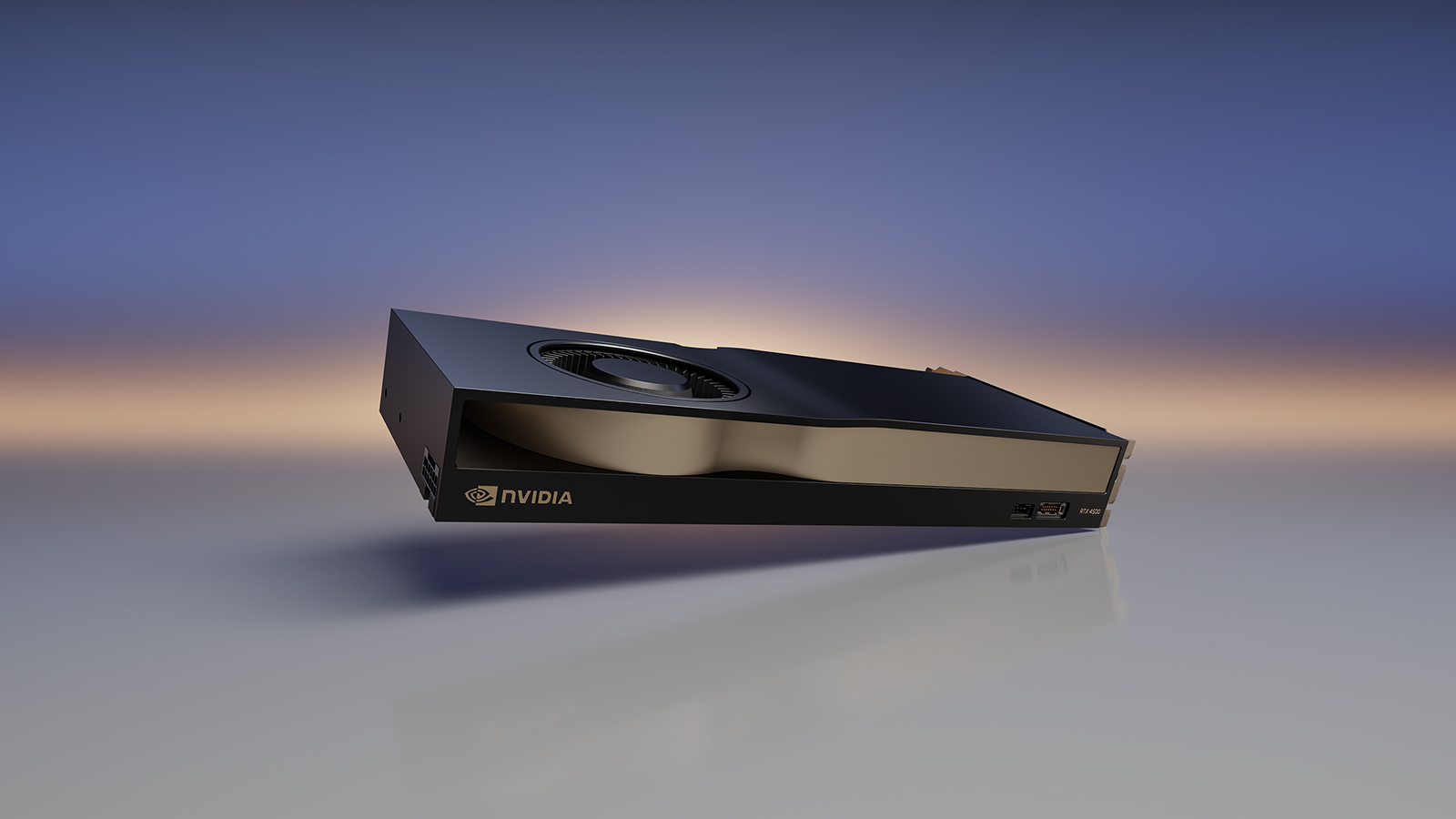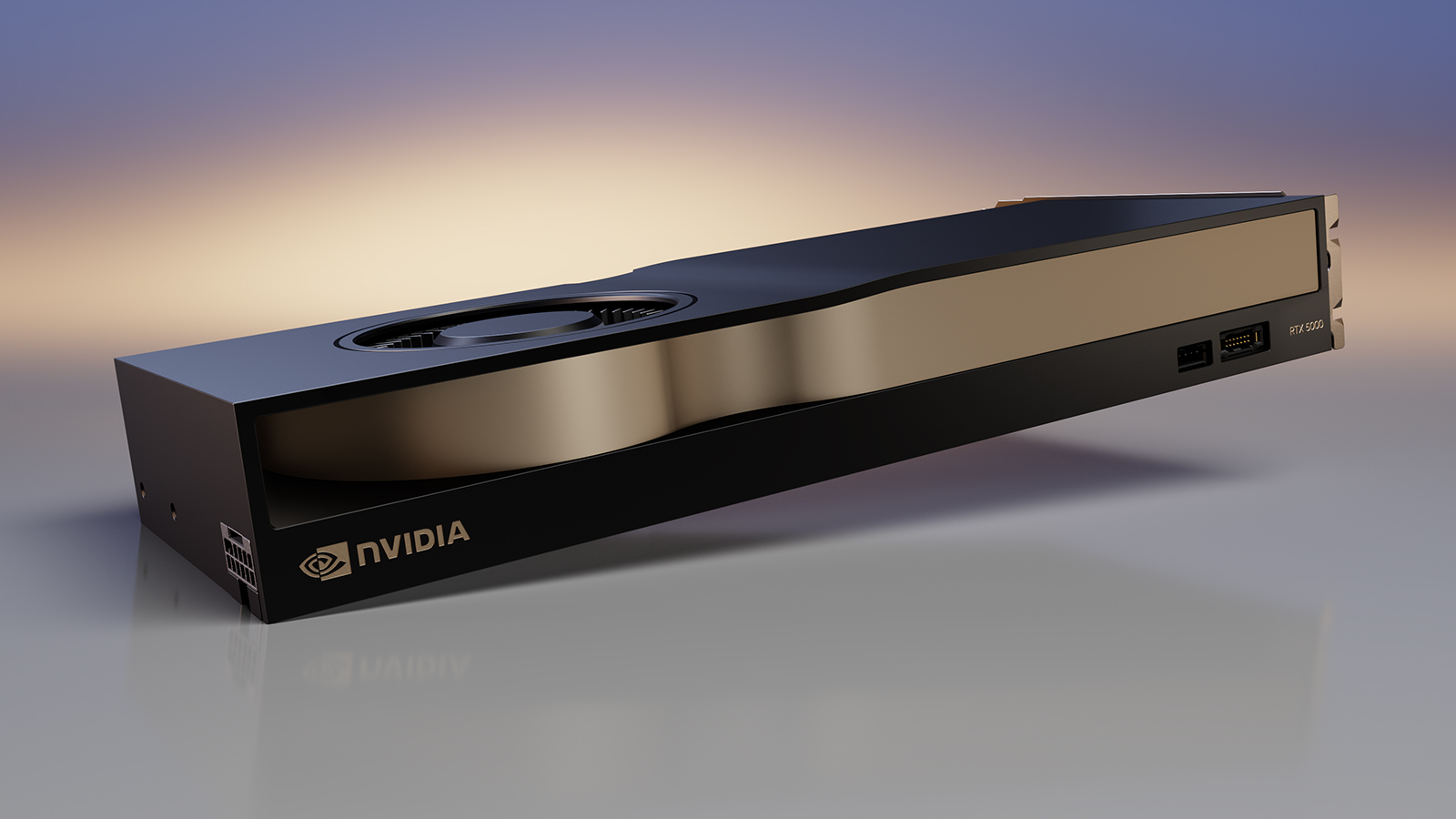Nvidia RTX 4000, 4500 & 5000 Ada Generation GPUs launch
New viz-focused workstation GPUs start at $1,250 to expand mid-range to high-end options
Nvidia has expanded its pro graphics line up adding three Nvidia RTX Ada Generation workstation GPUs to target visualisation, simulation, XR, AI and CAD workloads.
The Nvidia RTX 4000 Ada (20 GB), Nvidia RTX 4500 Ada (24 GB) and Nvidia RTX 5000 Ada (32 GB) fill the middle ground between the Nvidia RTX 4000 SFF Ada (20 GB) (read our review) and Nvidia RTX 6000 Ada (48 GB) (read our review) which launched earlier this year.
The Nvidia RTX 4000 Ada and Nvidia RTX 4000 SFF Ada are identical in their cores specs, and have the same number of cores (CUDA, Tensor and RT) and 20 GB of GDDR6 memory. However, they have different form factors and max power consumption.
The Nvidia RTX 4000 Ada is a full height, single slot GPU designed for standard workstation towers. It draws up to 130W via a 6-pin power connector.
Meanwhile, the SFF version is a low profile, dual slot GPU specifically designed for Small Form Factor and ultra-compact workstations. It draws up to 70W, directly from the PCIe slot.
The Nvidia RTX 4000 Ada is available in September with an ESP of $1,250.
Moving up the range, the Nvidia RTX 4500 (24 GB) is billed as the most balanced GPU for the majority of workloads. The dual slot card has a max power consumption of 210W and is available in October with an ESP of $2,250.
The Nvidia RTX 5000 Ada has a max power consumption of 250W and needs a 16-pin CEM5 PCIe connector. According to Bob Pette, VP professional visualization at Nvidia, it is for those that need performance that is closer to Nvidia’s 6000 class GPUs, but don’t necessarily need 48 GB of frame buffer memory. Pette adds that the dual slot card delivers a huge performance leap over the previous generation Ampere RTX A5000 and A5500.
Compared to the RTX A5000, Nvidia says the RTX 5000 Ada has 1.6 times the graphics performance, twice the rendering performance in commercial renderers and three times the rendering performance in the Omniverse RTX renderer, which takes advantage of Nvidia DLSS 3.
DLSS 3, short for Deep Learning Super Sampling, boosts performance by using the Tensor cores in Ada Generation GPUs to generate entirely new frames without having to process the graphics pipeline (read our Nvidia RTX 6000 Ada Generation review for more on this).
Meanwhile, for the datacentre, Nvidia has announced the Nvidia L40S Ada GPU, which is effectively a passively cooled version of the Nvidia RTX 6000 Ada but clocked a little higher.
Up to eight Nvidia L40S GPUs can be accommodated in an Nvidia OVX reference server. Compared to the Nvidia A40, Nvidia says the Nvidia L40S Ada is up to 2.4x faster in commercial renderers and up to 4x faster in the Omniverse renderer.
The post Nvidia RTX 4000, 4500 & 5000 Ada Generation GPUs launch appeared first on AEC Magazine.
Powered by WPeMatico


